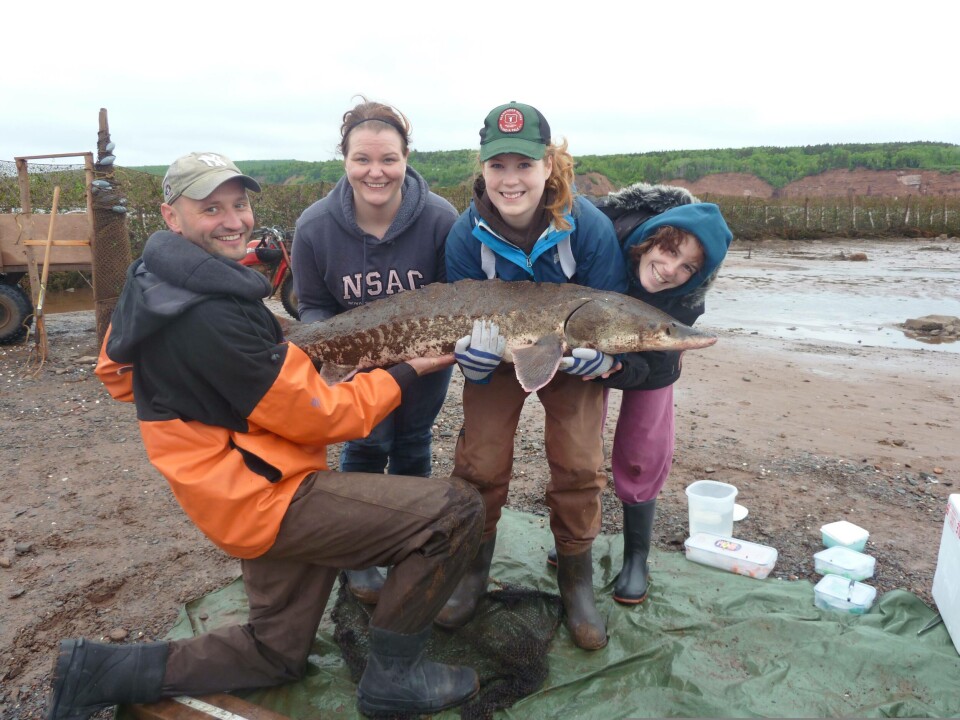
Surge in sturgeon research
For the last 5 years, researchers in eastern Canada have been developing genomic resources in a bid to enhance the immuno-competence of Atlantic sturgeon.
Dr Mark Fast, an associate professor at the Atlantic Veterinary College, part of the University of Prince Edward Island, is driving the research.
Dr Fast, who has been applying genomic techniques to the study of fish and fish pathogens for over a decade, told Fish Farming Expert that this research will benefit the entire sturgeon aquaculture industry.
“I had been doing a lot of work in fish health and working with genomic resources for Atlantic salmon, and when we started looking into wild/cultured Atlantic sturgeon health issues we found there very little out there in terms of transcriptomic or genomic knowledge for any of the sturgeons,” Dr Fast said.
Atlantic sturgeon (Acipenser oxyrhinchus) is a species of economic and ecological importance in Canada and abroad. While still small in scale, aquaculture for the production of caviar and related products has developed for this and other sturgeon species across North America.
Over the last few years, Dr Fast has been working alongside the owner and operator of New Brunswick’s Acadian Sturgeon and Caviar Inc, Dr Cornel Ceapa, to study immune system development and develop new ways to enhance immuno-competence and health in these fish. In collaborations with the Centre for Aquaculture Technologies Canada, the team has been developing genomic resources, using the fish from Acadian Sturgeon.
“We have begun to build these resources while trying to understand basic physiological and immunological functions of these ancient fish. This has allowed us to identify commonly used markers of health from human and veterinary medicine, and allowed us to start developing diagnostic tests to assess infection, immuno-competence and response to vaccination in sturgeon,” said Dr Fast.
Sturgeons are long-lived fish that mature late and have complex life history strategies. Because of this, sturgeon products, namely eggs/caviar, are difficult to obtain and command very high prices.
“These are also the reason most sturgeons are endangered or very rare, because they have been over harvested in the wild and suffered from habitat destruction,” Dr Fast explained.
The culture of sturgeon can help to relieve beleaguered wild sources of caviar, but requires growing the fish for 10-15 years before they spawn and produce caviar, and farmers desperately need to understand how to keep them healthy for these long periods.
Immuno-competence
“We want to identify important markers of infection and of immunological health for these animals, so we have to target tissues that are going to give us the best indication of that,” said Dr Fast.
“Fish don’t have lymph nodes like mammals do, so some of the functions we associate with bone marrow or lymph nodes in mammals tend to occur in the kidney and spleen. We looked at the spleen in these fish because we know the timing of its development and is relatively homogenous compared to the kidney, making it easier to work with and understand its role over time.”
Dr Fast explained that there are many similarities in the immune response of vertebrates, including sturgeon.
“Early-immune defenses activated by trauma, infection and stress have some common hallmarks across all jawed vertebrates, as do how these defenses prime the body for future encounters with the same pathogen (ie immune memory and principles of vaccination). We have observed that Atlantic sturgeon share these hallmarks, which means we can monitor their health more accurately, as well as maintain current and enhance future health more easily,” he continues.
The group has also looked at the gills and skin, as they are both important barriers to infection in sturgeon. Dr Fast says that the project is in some ways a proof of concept that this sort of effort can be done with other species of sturgeon that are more commonly used in aquaculture, such as white sturgeon on the west coast of Canada, or species of importance in Europe.
“We’ve identified multiple markers that we think are important and that are very similar to immunological markers in other fish and humans,” Fast explained. “Our current work is to determine the ‘healthy’ vs ‘unhealthy’ ranges of these markers, how specific they are for types of infection and disease, and develop an easy-to-use test for a diagnostic lab, veterinarian or even farmer to use to assess the health of these animals.”
“We are striving to provide the industry with accurate ways of assessing health in their fish, and in so doing can also determine how different strategies, (such as growth conditions, treatments and vaccines) can be applied to these fish, and make them work best. These will all help the industry to grow sustainably,” Dr Fast concludes.























































